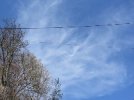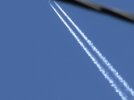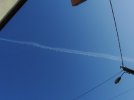Linton and others have described the sounds as
“harp-like” or similar to human voices or the sound of metal cables crashing against each other, but no satisfactory explanation has yet been offered for their origin.
[...]
Geologist Frank H. Bradley explored and documented Yellowstone’s natural wonders as a member of the Hayden Expeditions, and wrote in 1873 about hearing odd sounds along the shore of Yellowstone Lake.
“While getting breakfast, we heard every few moments a curious sound, between a whistle and a hoarse whine, whose locality and character we could not at first determine, though we were inclined to refer it to water-fowl on the other side of the lake,” Bradley wrote in his account of the geologic survey of the area.
There have been various explanations proposed for the sounds, ranging from fanciful speculation to educated guesses, often centered around the park’s
unique geology.
An August 1930 article in Popular Science magazine cited “mild earthquakes, their sounds possibly magnified in underground caverns like sound boxes” as one potential explanation.
The article also referenced a theory put forward by F. C. Marvin, chief of the U.S. Weather Bureau, who based his ideas on observations by Glen Jefferson, a Yellowstone meteorologist. Marvin noted that temperature inversions are not uncommon above Yellowstone Lake, where warmer air above the lake sits atop cooler air near the water’s surface.
He posited that such inversions
“may alter the normal way that the air conducts sound,” the article states. “It might produce sound mirages, in which distant noises of geysers, birds or steamboats might appear to come from near at hand.”


 to bed), at around 23:30 hours, there was a low, steady, but audible rumbling humming sound similar to that of a diesel truck at idle at a distance. There was also a dog that must have been hearing it as well, as it began to bark as if effected by the sound.
to bed), at around 23:30 hours, there was a low, steady, but audible rumbling humming sound similar to that of a diesel truck at idle at a distance. There was also a dog that must have been hearing it as well, as it began to bark as if effected by the sound. 

